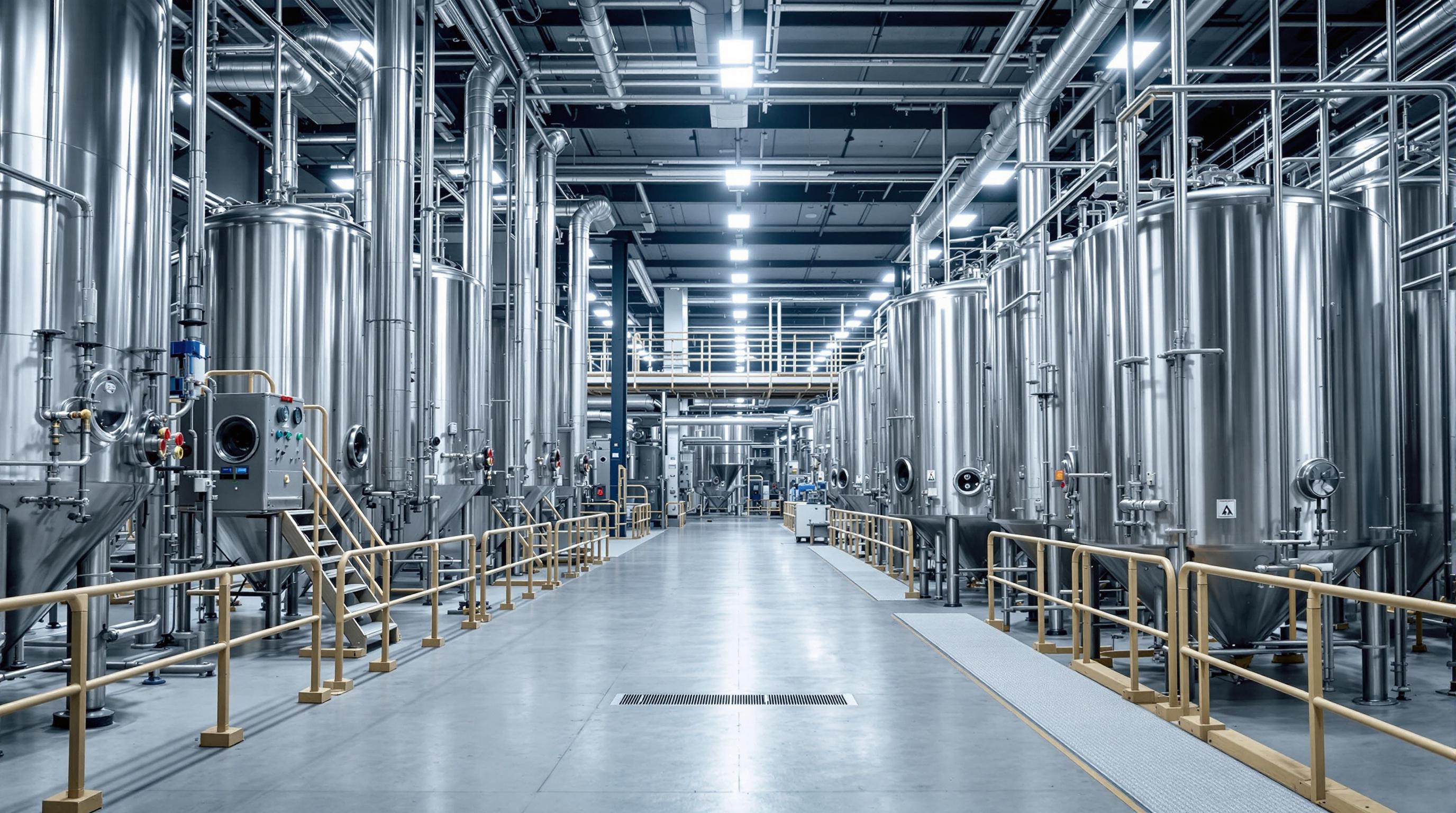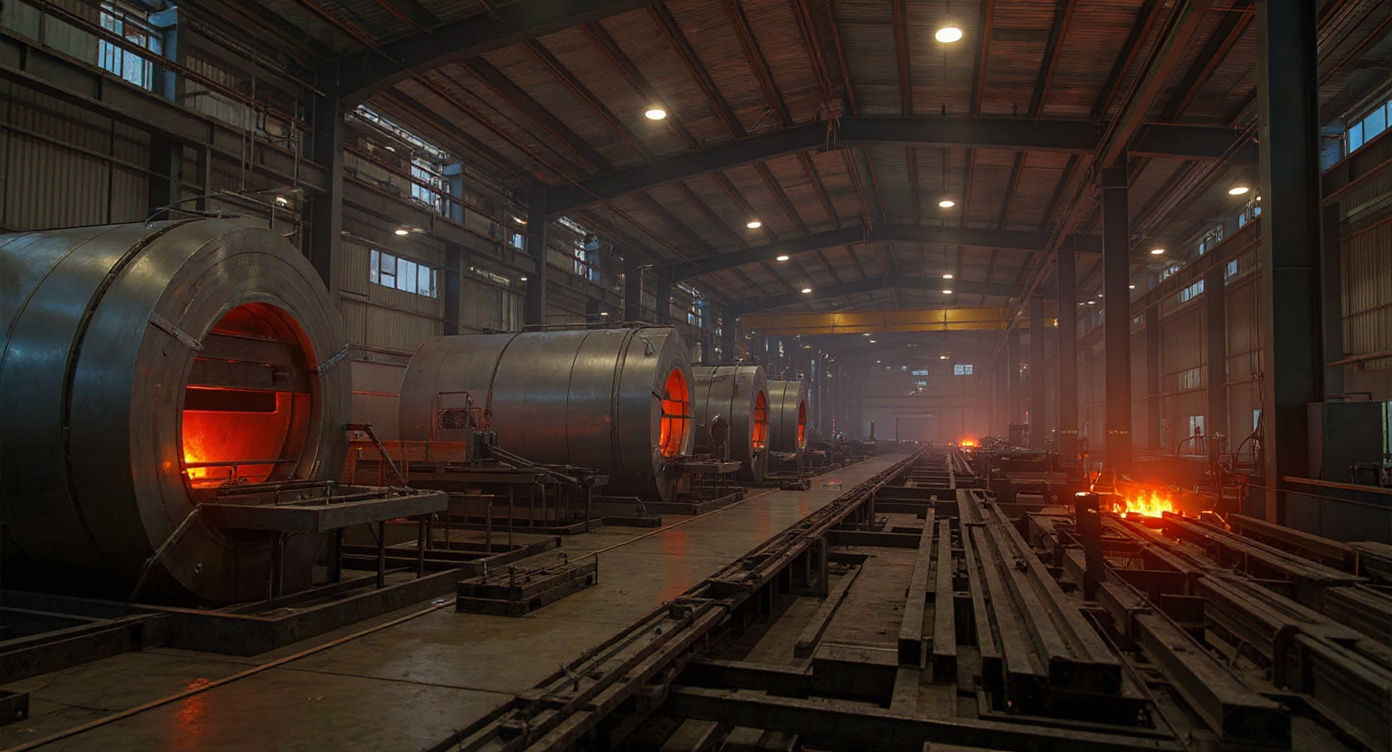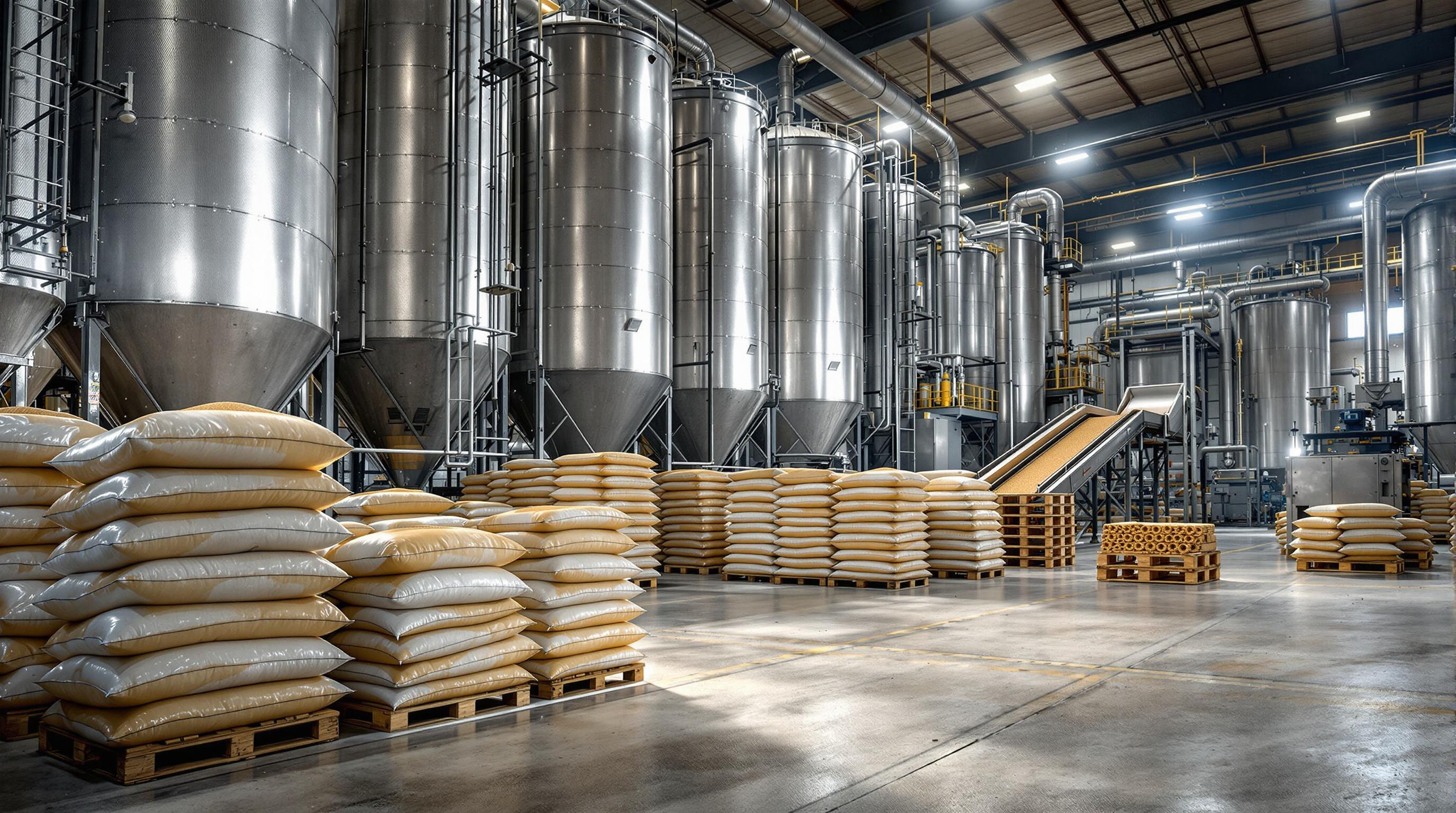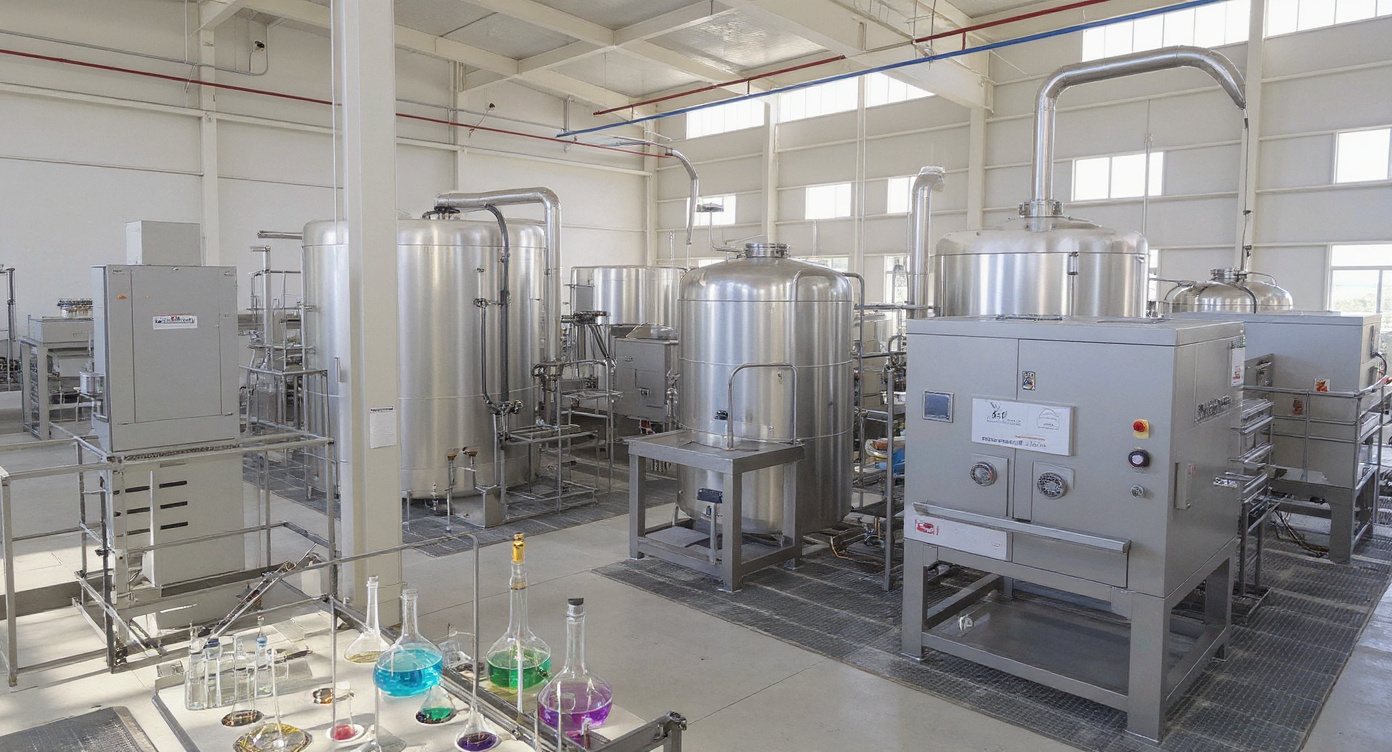Sodium Hydroxide and Caustic Soda Pumps
Sodium hydroxide (NaOH), or caustic soda, is central to chemicals, textiles, water treatment, and pharma. While it is essential for neutralization, cleaning, and refining processes, it is also one of the most corrosive alkalis handled in plants.
Handling or pumping caustic soda requires designs that resist corrosion and ensure operator safety.
This is why a sodium hydroxide pump cannot be treated as a standard transfer pump. It must be engineered to:
- Withstand continuous exposure to strong alkali without surface degradation.
- Prevent seal leaks that can endanger workers and equipment.
- Maintain hydraulic efficiency despite corrosive stress.
Chemitek designs caustic soda pumps with this exact balance of safety, durability, and long-term reliability. Whether called caustic, lye, or sodium hydroxide pumps, their role is to secure chemical handling.
Dosing Pumps for Sodium Hydroxide (NaOH)
In chemical plants, handling sodium hydroxide (NaOH) isn't just about transfer. The real challenge is delivering the exact dose needed for the process. Precision in dosing protects efficiency, worker safety, and compliance.
Overdosing leads to excessive chemical use, inflated operating costs, and unnecessary stress on downstream systems.
Under-dosing disrupts pH control, reduces treatment effectiveness, and risks falling short of regulatory standards.
Even small deviations make reliable NaOH dosing pumps essential for safety and cost control.
Why Accuracy Defines NaOH Dosing
Unlike bulk transfer pumps, sodium hydroxide dosing pumps are engineered for micro-level control. They are built to:
- Deliver exact chemical quantities for reliable pH management.
- Operate continuously under aggressive alkali duty without component wear.
- Use precision dosing systems designed for aggressive caustic service.
- Integrate into automation ecosystems such as PLC and SCADA, enabling live monitoring and closed-loop dosing adjustments.
Benefits of Reliable Sodium Hydroxide Dosing
When dosing precision is maintained, plants achieve measurable gains:
- Reduced chemical wastage through consistent metering.
- Stable end-product quality in sectors like textiles and pharmaceuticals.
- Regulatory compliance with strict effluent discharge and environmental norms.
- Lower lifecycle expenditure as dosing pumps built for caustic service outlast generic dosing systems.
Transfer Pumps for Caustic Soda Applications
Bulk movement of sodium hydroxide (NaOH) places unique stress on pumps. For bulk pumping sodium hydroxide, transfer pumps must manage both chemical aggression and the hydraulic demand of continuous duty.
That's why sodium hydroxide transfer pumps and caustic transfer pumps must be engineered for durability as much as compatibility.
Where Caustic Transfer Pumps Are Used
These pumps are essential in:
- Tank-to-tank transfers in large chemical plants where uninterrupted flow is required.
- Bulk loading and unloading in storage and transport.
- Recirculation loops are used during alkali-based refining, cleaning, or neutralization processes.
Why Material Selection Matters
Concentrated NaOH and heat wear down metals, making polymer-lined or duplex designs essential. To ensure long service life, Chemitek's caustic soda transfer pumps combine polymer-lined designs, corrosion-resistant internals, and advanced sealing systems that withstand alkali attack and maintain hydraulic efficiency.
Built for continuous operation, these pumps deliver 24/7 reliability with fewer shutdowns, predictable performance, and lower maintenance costs, making them ideal for bulk handling and circulation duties.
Centrifugal Pumps for Caustic Soda Handling
Centrifugal pumps remain the preferred choice in plants that move large volumes of sodium hydroxide (NaOH). Their efficiency in continuous, high-flow operations makes them indispensable across chemical, textile, and effluent-handling industries. Caustic soda stresses centrifugal designs, demanding more than generic solutions.
Key Challenges in Centrifugal Pump Design for Caustic Soda
- High suction pressure sensitivity: Poor hydraulic balance at the inlet creates uneven forces, leading to early impeller wear.
- NPSH considerations: Even at high flow rates, inadequate NPSH margins increase cavitation risk and efficiency losses.
- Seal and bearing strain: Elevated suction pressures cause axial thrust, while caustic vapors intensify stress on seals and rotating parts.
Chemitek addresses this with:
- Balanced suction hydraulics that reduce uneven forces.
- Low-NPSHr designs to stabilize high-flow corrosive duties.
- Anti-cavitation impellers that protect seals and improve efficiency.
Hydraulics optimized for sodium hydroxide duty maintain efficiency and stability under aggressive suction conditions.
When suction pressure isn't managed, centrifugal pumps face more than shortened lifespans. The result is higher energy use, shutdowns, and seal replacements. Even a 5% efficiency drop at high flow rates can add thousands to annual energy bills.
Materials for Caustic Soda Pumps
Material compatibility is the most critical factor in sodium hydroxide (NaOH) pump performance. Even the strongest alloys fail quickly if mismatched with concentration or temperature.
Caustic Soda Pump Material Options
- Duplex and Super Duplex Steels: High strength and chloride resistance for moderate NaOH duties.
- SS316L: Reliable in pharma and textile plants for lower concentrations, but not suited to strong alkalis.
- Non-Metallic Linings (PFA, PVDF, PTFE): Benchmark for concentrated NaOH resistance.
Chemitek customizes pumps with fluoropolymer linings for concentrated or hot NaOH. These designs maintain hydraulic efficiency, resist stress cracking, and extend service life in continuous operations.
Concentration, Temperature, and Reliability
As NaOH concentration or temperature increases, corrosion accelerates. Pumps built with the right materials:
- Deliver consistent performance under harsh conditions.
- Minimize unplanned downtime and seal failures.
- Lower lifecycle costs by extending replacement intervals.
By aligning pump materials to specific NaOH conditions, industries achieve safe, efficient, and predictable operation.
Customized and Wholesale Caustic Soda Pump Options
Not every industry can work with an off-the-shelf caustic soda pump. Requirements vary depending on flow rate, duty cycle, and chemical concentration. While caustic soda pump wholesale models serve well for standard transfer duties, many plants need pumps built around their unique processes.
- Customized hydraulics designed to handle specific suction conditions and operating pressures.
- Tailored coatings and chemistries matched to your process media.
- Scalable supply programs that meet the needs of OEMs, distributors, and large manufacturing facilities without delays.
By aligning pump designs with chemical aggressiveness and operational load, Chemitek ensures pumps last longer and perform predictably.
Standard caustic soda pump wholesale programs support consistent specifications for routine applications, while custom builds address aggressive or high-temperature caustic service.
Applications of Sodium Hydroxide Pumps
Sodium hydroxide pumps support critical operations across industries. Their role goes beyond transfer; they maintain process stability, product quality, and environmental compliance.
Chemicals & Pharmaceuticals
Used in neutralization, solvent dosing, and reactor cleaning. Precision pumps prevent contamination and meet strict GMP and safety standards.
Water Treatment
Caustic soda dosing pumps correct pH levels, protect pipelines from corrosion, and ensure treated water meets regulatory norms.
Textiles, Pulp & Paper
In bleaching, dyeing, and pulping, pumps must resist hot alkalis and avoid fiber damage.
Effluent and Wastewater Plants
Handling chlorinated or caustic effluents requires pumps that can manage abrasive solids and resist erosion-corrosion. In effluent plants, Chemitek's sodium hydroxide pumps are field-tested for consistent performance, even in aggressive discharge streams.
Food & Beverage
CIP (Cleaning-in-Place) systems rely on caustic soda pumps to deliver hygienic alkali washing. Here, sanitary design is as critical as hydraulic performance.
Across these uses, a chemical pump for caustic soda protects product quality while keeping systems compliant and predictable.
Maintenance and Lifecycle Considerations for a Sodium Hydroxide Pump
Even the most robust caustic soda pumps experience stress when exposed to aggressive alkali. Strong engineering reduces unplanned downtime; however, routine checks remain essential to maximize service life. Common issues include:
- Seal leaks caused by elastomer degradation under prolonged NaOH exposure.
- Impeller erosion from abrasive wear during high-flow circulation.
- Efficiency losses occur as wetted surfaces roughen, increasing energy demand.
To address this, Chemitek promotes predictive care over reactive fixes. Using NaOH dosing pumps with sealed linings minimizes elastomer wear, scheduled inspections catch impeller damage early, and readily available spares such as seals, liners, and impellers ensure downtime stays minimal.
Lifecycle Cost Advantage
Across their operating life, Chemitek's sodium hydroxide pumps deliver measurable savings.
Fewer replacements are needed, hydraulics that resist roughening preserve energy efficiency, and predictable maintenance schedules lower the total cost of ownership (TCO).
For operators, this translates to pumps that stay efficient, safe, and cost-controlled under even the harshest caustic soda duties.
 ISO 9001:2015 certified
ISO 9001:2015 certified
 ISO 14001:2015 certified
ISO 14001:2015 certified
 ISO 45001:2018 certified
ISO 45001:2018 certified











